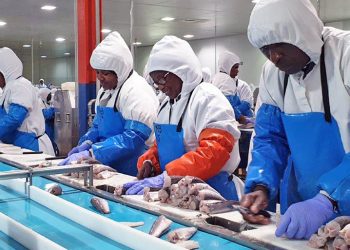
The Walvis Bay port has swiftly become a focal point for shipping activities, experiencing a notable surge in shipments, according to the latest data from the Namibian Ports Authority (NamPort).
Amid rising maritime security concerns in the Red Sea, shipping giant A.P. Moller-Maersk has strategically identified Walvis Bay as a safe refuelling hub.
Recent weeks have seen increased engagement, with Maersk vessels such as Maersk Amazon, Maersk Salalah, and Maersk Aras showcasing substantial activity.
During the period from January to February, Maersk Amazon is expected to complete 365 loads and 297 discharges with four restows, totalling 670 moves.
Maersk Aras, which commenced movements on January 15th, recorded 789 loads, 148 discharges, and a total of 937 moves.
Maersk Salalah is set to execute 500 restows and 1,000 moves later this month.
The port’s strategic importance is underlined by its minimal deviation from established shipping routes, attracting not only container lines circumventing the Cape of Good Hope but also tankers, bulk carriers, and various other cargo vessels, as mentioned by Simone Piredda, a senior trader at Monjasa.
Despite the longer journey around Africa, which adds an extra 8,000 kilometres to voyages, the demand for refuelling and supplies at Walvis Bay has led Trafigura’s TFG Marine to position itself as a key player in the region.
The company explicitly offers fuel supply services to vessels rerouted away from the Suez Canal, operating not only in Walvis Bay but also in Algoa Bay in South Africa.
As the port continues to gain prominence amidst security concerns in the Red Sea, Walvis Bay stands as a crucial hub for maritime activities, with increased shipments and strategic partnerships shaping its role in the global shipping landscape.










